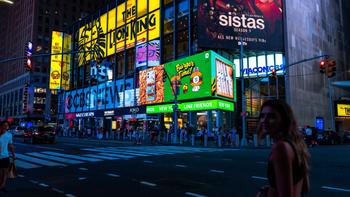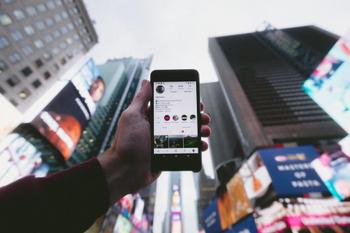According to new research from JCDecaux UK, most of the people buying DOOH programmatically (58%) are part of integrated omnichannel teams, and just over half (54%) are always involved in the planning and buying of at least one other digital channel. That means most teams tasked with buying programmatic digital out-of-home (pDOOH) media today are not made up of dedicated OOH specialists but broader digital buyers who are now including DOOH in their programmatic planning mix.
While these findings indicate the increased accessibility of programmatic DOOH, they also hint at the lack of structured buying teams for this specific media. As the global demand for pDOOH continues to grow, OOH specialists, digital planners, and publishers will need to adapt to a changing media ecosystem.
So how can media buyers account for the growing demand for this format within their existing teams? Read on for our tips on structuring your buying team for success with pDOOH!
The case for OOH specialist teams and agencies
For years, marketers have turned to OOH experts to help with the planning and execution of their campaigns due to the number of moving pieces to consider and the experience required to ensure successful outcomes. This hasn’t changed; while there are new tools in place to automate the planning and execution of OOH media, a trusted partner with industry expertise can save businesses time and money and reduce the headache of trying to figure it all out on their own.
While every buying team will have their own case of whether combining PDOOH and traditional trading works within its business structure, there’s certainly a case to be made for keeping traditional OOH buying teams separate from pDOOH. The reason for this is simple (and very similar to the reason why so many in-house marketing departments choose to consult with a dedicated OOH specialist team in the first place): there are several fundamental differences between how traditional OOH (both static and digital) is traded and how pDOOH should ideally be managed.
Examples of key differentiators OOH specialists should consider when structuring their teams for pDOOH include:
- The buying process for static vs. digital inventory
- Frequency-based vs. impressions-based audience metrics
- Fixed vs. flexible pricing strategies
- Direct vs. tech-automated means of trading
Buying process: Digital signage vs. static signage
As a non-digital format, static inventory obviously cannot be traded programmatically—yet it remains an important aspect of many strong OOH campaigns. It also has very different metrics to digital OOH inventory in terms of share of voice, reach, engagement, length of the campaign, and so on, as well as added costs like production and installation that are mostly irrelevant when it comes to digital inventory.
Audience metrics: pDOOH’s data-driven approach to campaign targeting
While traditionally traded OOH and DOOH are measured in terms of campaign frequency and reach, pDOOH uses impressions as its key metric for audience measurement. This is an important distinction for planning purposes and post-campaign reporting. The results of a pDOOH campaign will therefore stand apart from those of a traditionally booked campaign thanks to the impression-based results it yields—even if combined with traditional OOH as part of a broader campaign.
Pricing: Programmatic DOOH’s flexible, real-time pricing (ad cost per impression)
Programmatic DOOH is CPM-based, meaning the cost is per thousand impressions as opposed to a set fee for a given period of activity. pDOOH pricing is also flexible—with the potential for non-guaranteed activity, and therefore, there is no “set budget” before a campaign commences. This demands a certain level of flexibility from both the buyers and sellers in terms of pricing and discounts, and will be managed separately from the set-budget briefings of a traditional campaign.
Means of trading: The technology behind programmatic ad buying
The technology used for trading is another key difference. While traditional OOH and DOOH buying is still a mostly manual process between buyers and publishers, pDOOH utilizes DSP and SSP platforms to facilitate the transaction process. That means the entire buying process, from briefing through to approvals, operates in an entirely different way for direct and I/O sales in comparison to pDOOH.
While every buying team will have to consider whether separating pDOOH and traditional trading works within their specific business structure, OOH specialist teams all have the advantage of existing familiarity with the outdoor advertising space. The key knowledge gap for these teams is learning how to use the technology to transact DOOH programmatically. But like anything worth knowing, a little time and dedication—along with the right resources—is all your team needs to establish your business as an expert in all things programmatic DOOH.
Incorporating pDOOH in an omnichannel digital team
DOOH’s clever combination of creativity and contextually relevant data isn’t just unlocking both new and existing audiences; the ability of pDOOH to connect with other media channels is proving to be a valuable tool in the omnichannel marketing mix, too. And thanks to the streamlined workflows of today’s demand-side platforms (DSPs), you don’t need previous experience in OOH to run amazing campaigns—the technology is more or less the same as what digital media buyers are already used to.
Because of this, it’s arguably simpler for hybrid digital teams to integrate programmatic DOOH into their existing planning, as they have extensive programmatic trading expertise from other formats and a broader scope from which to combine, assess, and optimize their campaigns. Still, a few key features of pDOOH are unique compared to other digital formats. The key for digital teams is not in separating buying teams but rather gaining the OOH expertise required to successfully—and productively—incorporate pDOOH into their cross-channel planning.
Examples of distinctive pDOOH features that hybrid digital buying teams should be made aware of include:
- One-to-many medium
- Support for varying/unique media formats
- Enhancement of other media formats
Programmatic DOOH: A one-to-many medium
Unlike device-based digital advertising, OOH is a one-to-many medium, meaning that every play is worth several (and sometimes hundreds of) impressions instead of just one. This is where the impression multiplier comes into play.
Support for innovative digital ad formats
While many other mediums offer a uniform format, DOOH comes in all different shapes and sizes—each with its unique way of reaching and interacting with audiences. Understanding the nuances of each format—how they deliver ads, the relevant buying periods, creative applications, and much more—is arguably the biggest hurdle a digital team would face when newly integrating pDOOH into their campaign repertoire.
pDOOH success metrics & full-funnel enhancement
While many digital formats have a very simple structure for measuring campaign success—one impression, one click, with a clear CPM—OOH is a unique beast in that there isn’t one right way to measure campaign success. Deliverables (plays, impressions, and so on) are accounted for via the DSP and SSP platforms, but what actually makes an OOH campaign successful?
One thing is for sure: the addition of DOOH to a broader media mix is proven to enhance campaign metrics across every stage of the funnel, from consideration to purchase intention and beyond. For example, a study by OnDevice Research found that adding DOOH to a social campaign increased campaign effectiveness across the brand funnel by an average of +23%.
Whether you decide to carve out a specialized pDOOH buying within your business or integrate this media channel within an integrated omnichannel team, there’s no doubt that the adoption of this means of trading is gaining momentum around the globe.






